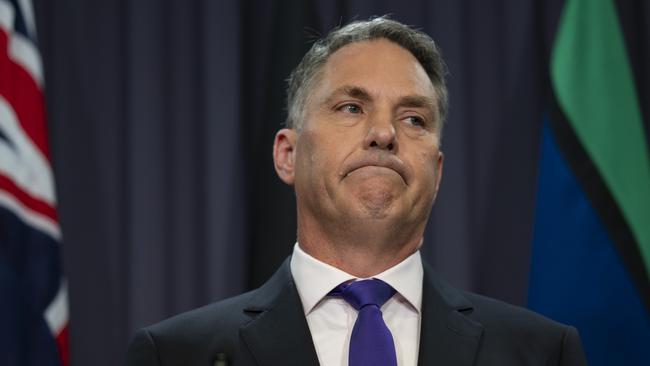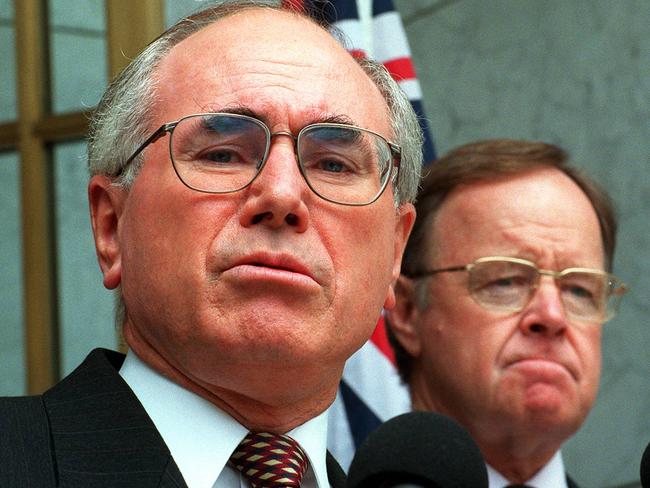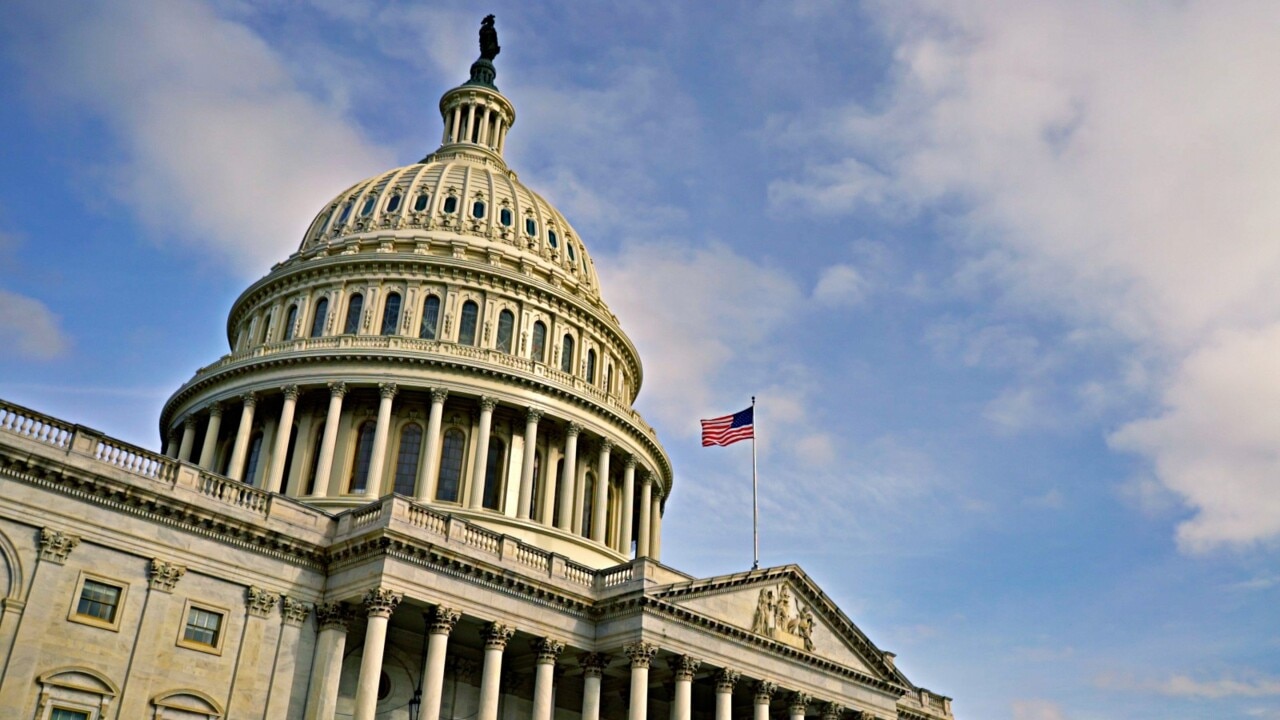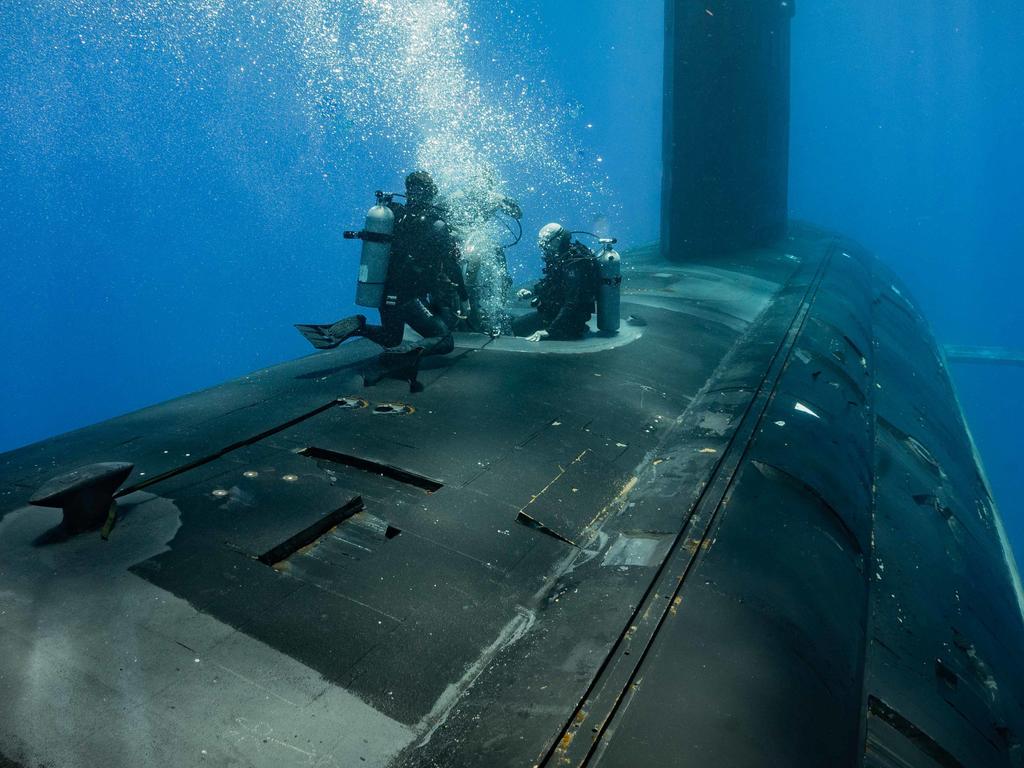Richard Marles: stop digging, start leading
The Defence Minister has one last chance to turn the ship of Defence around and save his career.

They are hardly alone. Marles is the 10th defence minister since the Howard government lost power in 2007. Most of these ministers failed to make any lasting positive impact.
Marles and Conroy may yet be able to rescue their position, but the record is that none of the previous nine defence ministers left the portfolio on top after coming back from a serious crisis.
Running Defence is incredibly hard. It’s the only job where a politician runs an organisation whose core purpose is using lethal force.
No other job pits a minister’s authority against Australia’s most iconic brands: the army, navy, air force, ANZAC, ANZUS and now AUKUS. John Howard once said never pick a public fight with a brigadier.

And no other job puts ministers – at best gifted amateurs in public policy – in charge of buying hundreds of billions of dollars of high-technology military equipment.
Its hardly surprising Marles and Conroy are failing because that’s what their predecessors did.
I was chief of staff to Ian McLachlan, John Howard’s first defence minister. Ian was one of the most able people in Howard’s cabinet with serious experience in business, farming and public policy.
He came to the portfolio with a reformist instinct. Within six months he formed the view that Defence needed fundamental change.
Two decades of deep peace after Vietnam had turned Defence into an unhurried organisation with antique management, an inward focus and little regard for combat capability.
McLachlan started a Defence Efficiency Review, gave it half a year to come forward with plans for streamlining Defence and strengthening the military’s combat “teeth” relative to the bureaucratic “tail”.

The idea was to make cost savings, but retain the money and start building combat capability. Kim Beazley had taken a similar approach with privatising Australia’s government-owned WWII-era defence industry.
It’s fair to say Defence hated every single aspect of the Defence Reform Program McLachlan developed.
There were regular leaks against the minister – remember the “dud subs” that supposedly (and incorrectly) sounded “like a rock band underwater”.
In McLachlan’s office, we felt under continuous siege. The Defence organisation would not communicate with us and moved with a sulky determination to resist change.

There were hardworking military and civilian officials who did their best to implement a new government agenda, but on balance McLachlan was regarded as a force to be resisted.
Many in Defence thought they worked to a higher ideal, which was said to be protecting national security. Too often that just hid a sense of corporate entitlement justifying a comfortable way of doing business.
What was admirable about McLachlan – and this is a very rare commodity – is that he never stopped fighting tenaciously from his position. His strategy for change was right. It was painful, but it shaped the ADF to deploy into East Timor in September 1999. That was the start of almost 20 years of continuous high-tempo military operations, which fashioned, however briefly, a capable, combat-ready force.
Some things never change: Marles and Conroy will now understand that, at its worst, Defence puts its own corporate interests and convenience first.
The clearest example of that came in 2015, when the department’s intelligence, military and strategic brains could find no problem with the idea that a Chinese company would run the Port of Darwin for 99 years.

Darwin Port is the only strategic port between Exmouth and Cairns. The Japanese saw it as enough of a risk to bomb it multiple times after Pearl Harbor. Why didn’t Defence see the port as a strategic asset in 2015?
Actually, Defence’s only interest in assessing the lease was whether it would impact on operations from the tiny neighbouring patrol boat base, HMAS Coonawarra.
Defence had no stomach for picking a fight with Treasury’s priority for foreign investment. Their advice, which successive governments have taken, is that nothing needs to happen to the Port of Darwin lease despite China’s obvious strategic threat to the north.
Marles and Conroy came up against similar Defence indifference at the end of 2023 to sending retired Taipan helicopters to Ukraine.

Australia has a strategic interest in helping a fellow democracy defend itself against an aggressive authoritarian power. But Defence’s chief concern was not to waste an hour or a dollar handing the Taipans in working order to Kyiv.
The strategic impetus to help Ukraine could only have come from government, but Marles, Conroy, Penny Wong and Anthony Albanese repeatedly said they were just following Defence advice.
Marles has made some mistakes in his approach to Defence. He did not use his years as shadow minister to understand the key equipment design and acquisition projects.
Labor’s constant claim of Defence bipartisanship shut down debate on issues that needed public airing. Labor had the time to shape a plan for Defence which they could have started on day one of office.
Instead, the promise was for a root and branch review of ADF force structure to be done by Stephen Smith and Sir Angus Houston. Doing that review took the best part of a year, allowing Defence to adopt a “wait and see”, business-as-usual approach.
Marles should have put himself into the central work of the review so that when it was done, he could own the outcomes and immediately implement it.

Instead, Marles stood back, allowed the Defence Strategic Review to be handed to Defence for more consideration. This led to more studies and delays. What did Marles think Defence would do other than try to kill the recommendations the organisation hated?
Next week we may get an announcement about the future shape of the Navy’s surface fleet. Reports suggest that the major outcome will be no change to the troubled anti-submarine warfare destroyer project beyond cutting the build from nine to six ships.
If this is correct it will have taken close to a full term of government to arrive at a plan for no change other than a smaller fleet.

Perhaps most bizarrely Marles handed responsibility to Conroy to be the “lead on capability approval decisions through National Security Committee” and the “lead management of capability acquisition and sustainment projects once approved by government”.
Conroy also has another big job: international development in the Pacific. How is it that a person in Albanese’s outer ministry, in his first portfolio role, gets responsibility for billions of dollars of defence spending and our most sensitive regional partnerships?
This arrangement is unfair to Conroy and gives too much of a leave pass to Marles, who defers to Conroy on equipment details. Marles is not across the details and it shows at defence conferences and media engagements.
Marles failed in 2022 and 2023 to secure the extra funding that was essential to implement the DSR. He may berate Defence for lacking excellence, but no organisation can deliver military force equivalent to 4 per cent of gross domestic product with a budget that is limited to 2 per cent of GDP.

Taking Defence and the ADF to task for their failings is always a risky strategy for a minister. The organisation needs tough, sceptical and demanding leadership but it can be impossible to shift if it develops a mindset against its minister.
What should Marles do to turn the ship around? First, he should stop insisting that people call him “Deputy Prime Minister”, which only generates eye-rolling derision. He should actually be the Minister for Defence.
Second, Marles needs to come out of the 2024 pre-budget negotiations having won new funding for Defence.
Third, he should take back responsibility for bringing equipment decisions to NSC, because this is the essence of his job. Conroy should be put on to managing Pacific relations full time. It is a big enough task.
Last, Marles needs to apply some shock and awe to Defence. According to analysis by Marcus Hellyer from Strategic Analysis Australia, Defence senior leadership positions have multiplied at an absurd rate.
Across Defence, the new Submarine Agency and the Signals Directorate (all of which report to Marles) there are now 11 three-star generals and 13 equivalent civilian deputy secretaries. In 2012-13 there were six three stars and 11 deputy secretaries and in 2002-03, four three stars and six civilian equivalents.
The case for this growth is that Defence is more complex now. In reality the organisation has fewer operational demands on it in 2024 than at any time in the past 30 years. The ADF has never had more money spent on it and seldom been less ready for conflict.
Marles should dramatically cut those senior leadership numbers – say, by a third – and cascade that through the organisation at the one- and two-star level. Defence needs a reset even more than the minister. Here is an opportunity for Marles to lead. It’s his last chance in Defence.








Richard Marles and Pat Conroy, our Defence and Defence Industry ministers, are living the lonely nightmare of seeing their careers sputter from a succession of policy and implementation failures.